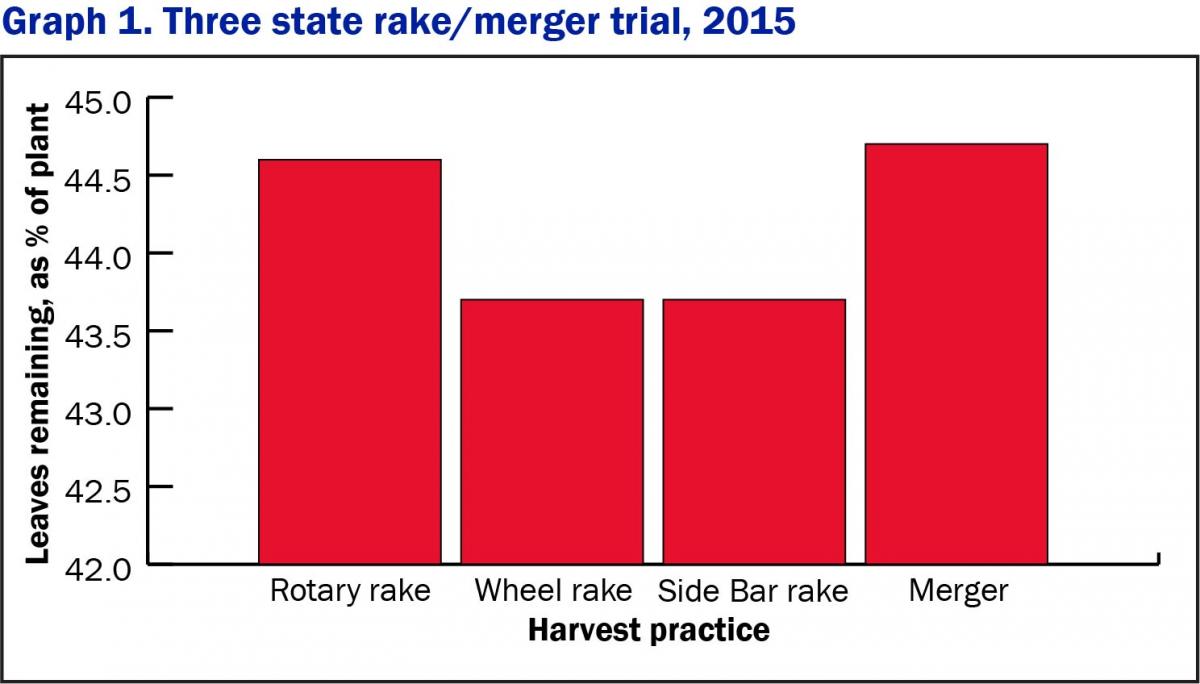
Retain those leaves! – Jon Urness, Vita Plus
 By Jon Urness, Vita Plus national forage specialist
By Jon Urness, Vita Plus national forage specialistHave you ever looked at your alfalfa hay or haylage and wondered, “What is the value of the leaves and stems?” Probably not, but the nerds among us might find the answer to that at least interesting. More importantly, the forage, dairy and beef producers among us may find such information critical to the success of their forage programs.
One way to express “value” is to use relative feed quality (RFQ). Dr. Dan Undersander, University of Wisconsin, has found the leaves are valued at 450 RFQ and the stems at 70 RFQ. With those values in mind, it becomes pretty clear how important it is to hang onto those leaves to produce high-quality alfalfa hay or haylage.
Typical standing alfalfa hay will have a leaf-to-stem ratio of 45-to-55 prior to cutting. The alfalfa is still green after cutting, so leaf loss is relatively low. But, by the time harvest occurs, we often see a leaf-to-stem ratio of 33-to-67; only one-third of the feed is leaves. Since we know the leaves have a 450 RFQ and the stems have a 70 RFQ, you can see how rapidly quality of the feed can deteriorate during harvest.
 Undersander says, when you see a greenish-grey cloud over the chopping operation, a tremendous amount of leaf loss is happening and, every time we move the hay, we lose dry matter and quality. Cutting, conditioning, raking, merging, baling, chopping, and hauling all impact leaf loss, but the data in graph 1 suggests we have room for improvement when it comes to raking and merging the crop.
Undersander says, when you see a greenish-grey cloud over the chopping operation, a tremendous amount of leaf loss is happening and, every time we move the hay, we lose dry matter and quality. Cutting, conditioning, raking, merging, baling, chopping, and hauling all impact leaf loss, but the data in graph 1 suggests we have room for improvement when it comes to raking and merging the crop.
Other factors may affect leaf loss. Consider the following:
- Disease resistant varieties may reduce leaf loss.
- Fungicides may help prevent leaf loss.
- Later-maturing and delayed harvests may increase leaf loss.
- Flail conditioners and tedders are designed for grass, not alfalfa, and can cause high leaf loss.
- Round balers cause high leaf loss with alfalfa.
- Wheel tracks on partially cured windrows cause high leaf loss.
Finally, no discussion about leaf loss is complete without considering moisture levels at harvest. Harvesting alfalfa hay between 55 and 60 percent moisture is important for many reasons, including packing at the right density, achieving an ideal fermentation, reducing porosity of the feed in storage, and reducing leaf loss. Dry baling requires much lower levels (between 20 and 25 percent), and harvesting in combination with proprionic acid will allow for preservation in storage and limit leaf loss associated with harvest.
| Category: |
Feed quality and nutrition Forage Foundations Forage harvesting Forage storage and management |

